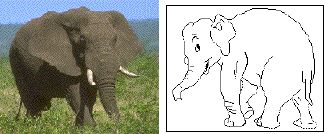
2. WHAT IS A SYSTEM?
3. TYPES OF MODELS
Symbolic: verbal, written language, or mathematical
2) Dynamic vs. Static Models
Static: time invariant
3) Empirical (Correlative) vs. Mechanistic
(Explanatory)
Models
Mechanistic: with internal dynamics; explanatory; understanding/prediction
Whether a model is empirical or mechanistic is often relative, depending on the level of detail or the scale of observation.
4) Deterministic vs. Stochastic Models
Stochastic: with one or more random variables; estimation of parameter variations (e.g., mean, variance, distribution)
5) Simulation vs. Analytical Models
Simulation models: use of computers; relatively simpler mathematics; usually less generality and more realism
![]()
4. WHY MODELS?
Four Phases in
Ecological
Modeling
Phase 2: Quantitative
model specification
Phase 3: Model evaluation
Phase 4: Model
application